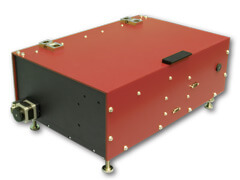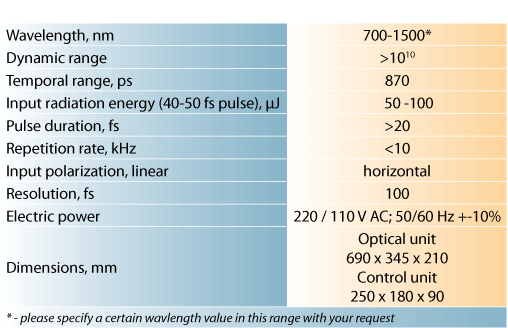COMET Scanning Third-Order Cross-Correlator (TOCC)
10^10 dynamic range
960 ps scan range
700 to 1500 nm possible wavelengths
Sensitivity >80 uJ@40-50 fs@800 nm
USB PC connection and PC acquisition software
ASE, pre- and postpulses, pedestal information

1. General
Working with an expensive ultrafast amplifier system without any information about its current contrast profile may reduce efficiency and reliability of your experimental outcome as well as produce wider spread in the gathered data. Pulse contrast is essential for many applications of Ti:S and other ultra-short pulse amplifier systems. The Comet third-order scanning cross-correlator (aka TOCC or TOAC) offers its 10^10-wide dynamic range and 950ps-broad temporal range at your service. It can give comprehensive information about the ASE of the amplifier, pulse pedestal, pre-and post-pulses’s structure and shape.
The unit also gives information about the pulse intensity cross-correlation function and measure pulse duration and shape. The user can also select the desired narrow area (say, +/- 50 ps from the peak) for faster scanning speed. The Comet communicates with a PC via USB and acquisition and analysis software is included in the package.
2. Specifications
3. Applications
Pulse contrast measurement of femtosecond amplifier systems
Ultrafast amplifiers alignment and monitoring
4. FAQ
Q. How fast can the Comet do the scan?
A. The sacanning speed depends on the scanning range (full or only the necessary part of the range) and repetition rate. These graphs represent the scan speed as a function of repetition rate for full range scan (450 ps) and a 40-ps scan.
5. RFQ Hints
Just some quick hints before you send us an RFQ:
Let us know your pulse duration, pulse energy and repetition rate, as well as wavelength so we could calculate the necessary sensitivity level for your system.
Let us know if you need vertical input polarization.
